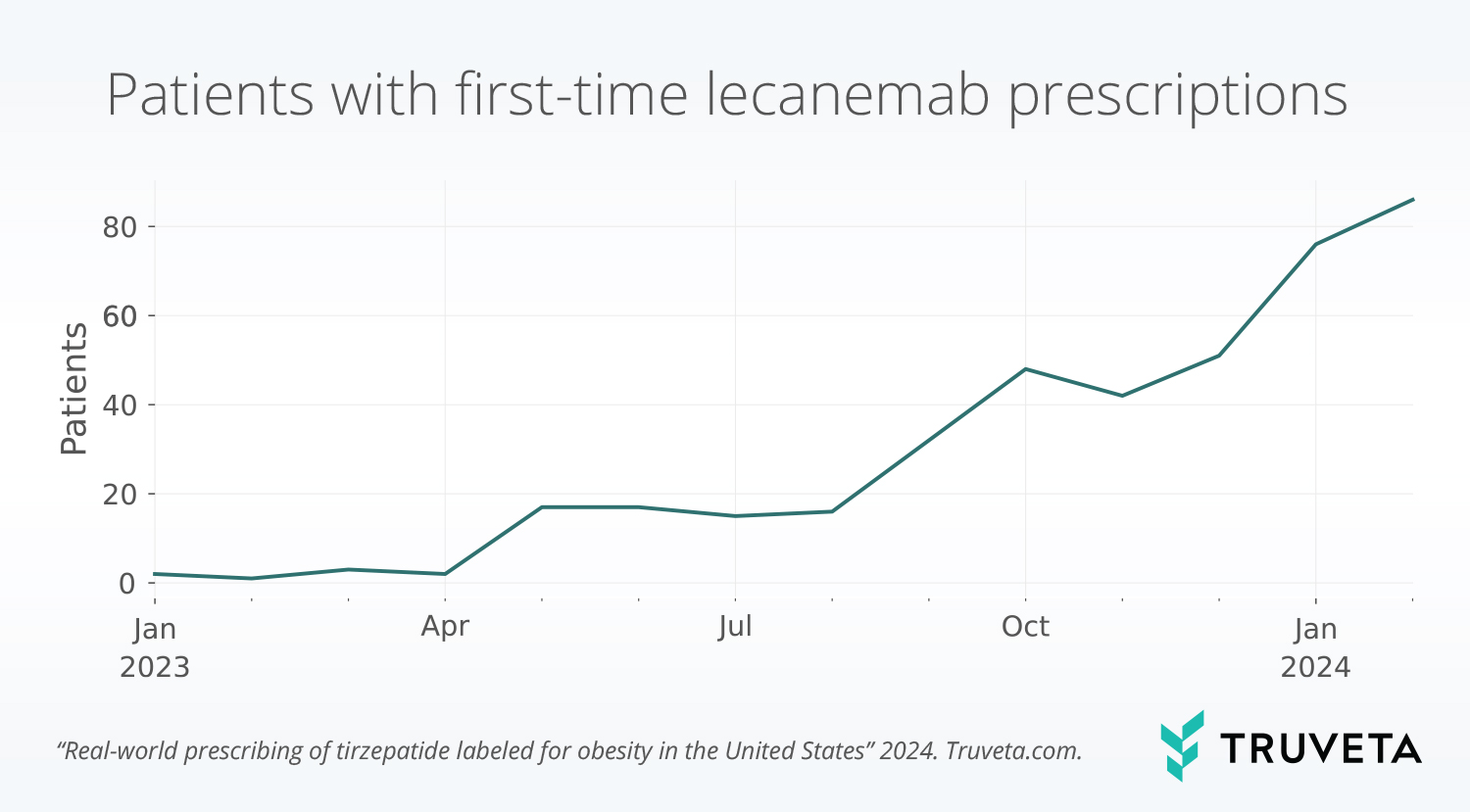Sign up for a free account to read full studies, with full transparency into methods and results, and experience the power of Truveta Studio
Authors: Brianna M. Goodwin Cartwright ⊕Truveta, Inc, Bellevue, WA, Patricia J. Rodriguez, PhD MPH ⊕Truveta, Inc, Bellevue, WA, Samuel Gratzl, PhD ⊕Truveta, Inc, Bellevue, WA, Charlotte Baker, DrPH MPH CPH ⊕Truveta, Inc, Bellevue, WA, Nicholas Stucky, MD PhD ⊕Truveta, Inc, Bellevue, WA
Date: June, 2024
Abstract
Background
Lecanemab received accelerated FDA approval in January 2023 and full FDA approval in July 2023 for treatment of Alzheimer’s disease (AD). After full approval, CMS (Medicare) approved reimbursement for lecanemab and patients have started to receive the drug as part of care. Little is known about the uptake of the drug and the associated demographics and social drivers of health (SDOH) of patients who are prescribed or receiving lecanemab. We describe the demographics, SDOH, and uptake patterns of patients receiving lecanemab in clinical care.
Methods
Using a subset of real-world EHR data from Truveta, a collective of US healthcare systems, we identified patients with a of lecanemab, between January 1, 2023 and December 31, 2023. We describe patient demographics and SDOH.
Results
We included 223 people. Most of the population was female (57.0%), white (74.4%), and between the ages of 65-74 (37.2%) and 75-84 (43.0%) years of age. The majority of the population had evidence of lecanemab after the full FDA approval in July (83.9%). October 2023 had the highest number of first-time administrations (22.0% of the entire population).
The majority of the population had an individual income between $35,001 – 60,000 (26.1) and $60,001 – 80,000 (36.5%), however, 18.5% had incomes over $100,001. The majority owned their place of living (83.4%) and had a stable place of residence (98.6%).
Conclusions
In a large real-world population, evidence of lecanemab uptake remained limited during the period studied. The demographics of the population receiving lecanemab are reflective of the people who have AD, although there may be disparities in access, as a large percentage of the population has high incomes and owns their current place of living. As patients continue to receive lecanemab we plan to continue to track their adherence, associated outcomes, and potential adverse events.
Sign up for a free account to read this full study, with full transparency into methods and results, and experience the power of Truveta Studio

